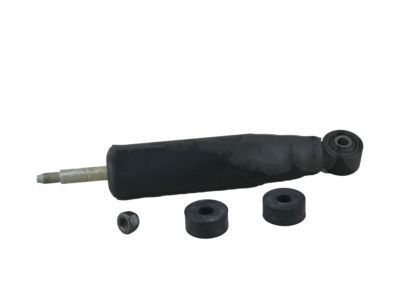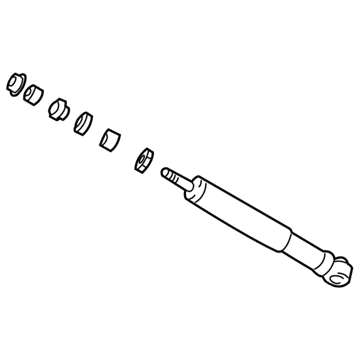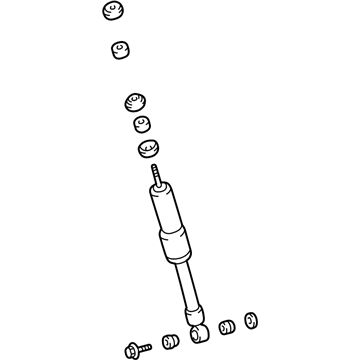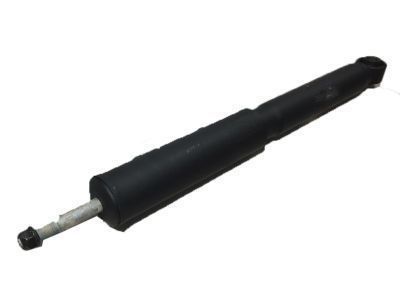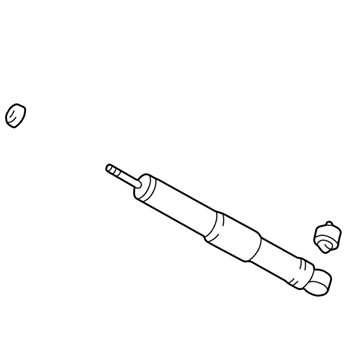×
ToyotaParts- Hello
- Login or Register
- Quick Links
- Live Chat
- Track Order
- Parts Availability
- RMA
- Help Center
- Contact Us
- Shop for
- Toyota Parts
- Scion Parts
My Garage
My Account
Cart
OEM 2001 Toyota Land Cruiser Shock Absorber
Suspension Shock Absorber- Select Vehicle by Model
- Select Vehicle by VIN
Select Vehicle by Model
orMake
Model
Year
Select Vehicle by VIN
For the most accurate results, select vehicle by your VIN (Vehicle Identification Number).
3 Shock Absorbers found

2001 Toyota Land Cruiser Shock Absorber, Front
Part Number: 48511-69585$57.47 MSRP: $79.99You Save: $22.52 (29%)Ships in 1-3 Business DaysProduct Specifications- Other Name: Absorber Set, Shock; Shock Absorber, Front; Suspension Shock Absorber; Shock
- Position: Front
- Replaces: 48511-69565, 48511-69455, 48511-69467, 48511-69625, 48511-69466
- Item Weight: 5.60 Pounds
- Item Dimensions: 27.9 x 8.5 x 7.7 inches
- Condition: New
- SKU: 48511-69585
- Warranty: This genuine part is guaranteed by Toyota's factory warranty.

2001 Toyota Land Cruiser Shock Absorber
Part Number: 48531-69835$63.50 MSRP: $89.14You Save: $25.64 (29%)Product Specifications- Other Name: Absorber Set, Shock; Shock Absorber, Rear; Suspension Shock Absorber; Shock; Absorber Assembly, Shock, Rear Passenger Side; Absorber Assembly, Shock, Rear Driver Side
- Manufacturer Note: MARK 48531-60682
- Replaces: 48531-69685, 48531-69775
- Item Weight: 7.20 Pounds
- Item Dimensions: 27.4 x 7.1 x 6.0 inches
- Condition: New
- Fitment Type: Direct Replacement
- SKU: 48531-69835
- Warranty: This genuine part is guaranteed by Toyota's factory warranty.

2001 Toyota Land Cruiser Shock Absorber
Part Number: 48531-69557$63.50 MSRP: $89.14You Save: $25.64 (29%)Product Specifications- Other Name: Shock Absorber, Rear; Absorber Assembly, Shock, Rear Passenger Side; Absorber Assembly, Shock, Rear Driver Side
- Manufacturer Note: MARK 48531-60550
- Replaced by: 48531-69835
- Item Weight: 7.20 Pounds
- Item Dimensions: 26.6 x 6.7 x 5.9 inches
- Condition: New
- Fitment Type: Direct Replacement
- SKU: 48531-69557
- Warranty: This genuine part is guaranteed by Toyota's factory warranty.
2001 Toyota Land Cruiser Shock Absorber
Looking for affordable OEM 2001 Toyota Land Cruiser Shock Absorber? Explore our comprehensive catalogue of genuine 2001 Toyota Land Cruiser Shock Absorber. All our parts are covered by the manufacturer's warranty. Plus, our straightforward return policy and speedy delivery service ensure an unparalleled shopping experience. We look forward to your visit!
2001 Toyota Land Cruiser Shock Absorber Parts Q&A
- Q: How to service the rear shock absorber on 2001 Toyota Land Cruiser?A: Begin servicing the rear shock absorber by first dismounting both rear wheels while torquing them to 131 Nm (1,340 kgf-cm, 97 ft. lbs.). Begin support of the rear axle housing with a jack before disconnecting the shock absorber from the housing by unscrewing the bolt to 98 Nm (1,000 kgf-cm, 72 ft. lbs.). The removal of the other side's shock absorber starts with holding the piston rod before the nut and the two retainers and both cushion items and shock absorber are extracted with a torque of 69 Nm (704 kgf-cm, 51 ft. lbs.). Later remove the valve retainers and cushion from the shock absorber. The next step involves disconnecting the LH and RH stabilizer bar brackets through the removal of four bolts tightened to 18 Nm (185 kgf-cm, 13 ft. lbs.). This sequence is followed by disconnecting the lateral control rod by removing the nut, washer, and bolt requiring a torque of 150 Nm (1,530 kgf-cm, 111 ft. lbs.). Proper torque should be applied to the nut and bolt when final suspension stabilization occurs during installation. Disconnect the breather hose before lowering the axle housing in a slow and controlled manner to prevent damage to either the brake line or parking brake cable. Afterward remove the coil spring along with its insulator. Position the coil spring correctly and reinstall if needed before removing the bolt and follow spring from the frame with a torque of 28 Nm (290 kgf-cm, 21 ft. lbs.). To evaluate the shock absorber performance extend and compress its rod to detect irregularities or unusual sounds before making a replacement. To dispose of these shock absorbers make a 2 - 3 mm (0.079 - 0.118 inch) hole which will release the gas but handle chip debris carefully since the gas contains no detectable smell or poison. The shock absorber installation requires Special Service Tools 09710-14013 (09710-00061), 09710-28012 (09710-07031), 09950-70010 (09951-07100) together with a press to replace and install the bushing following removal steps in the reverse sequence.
